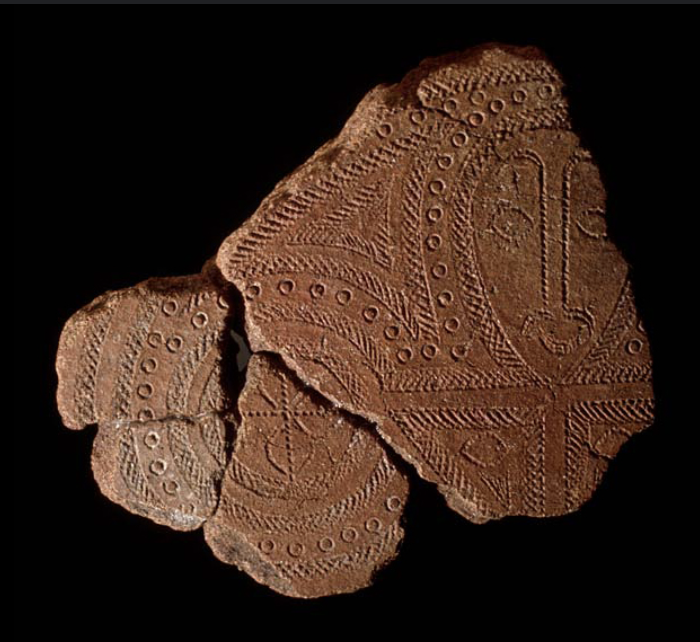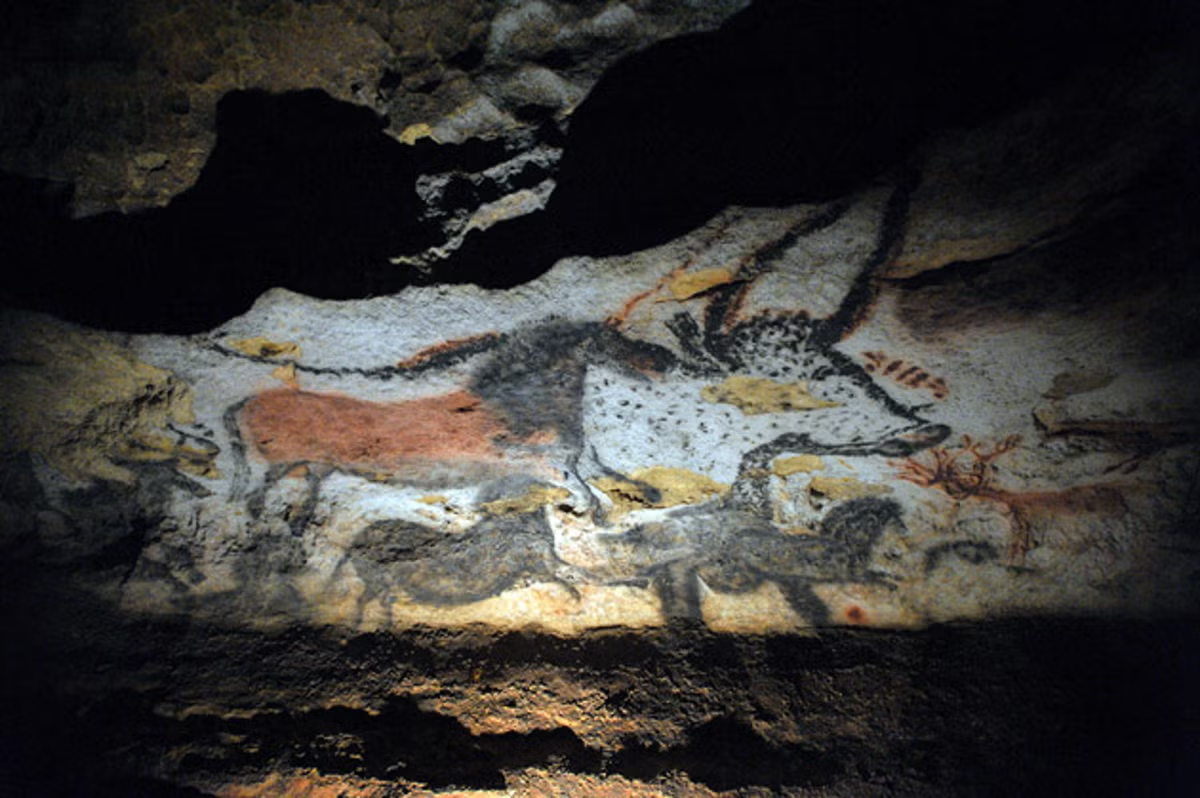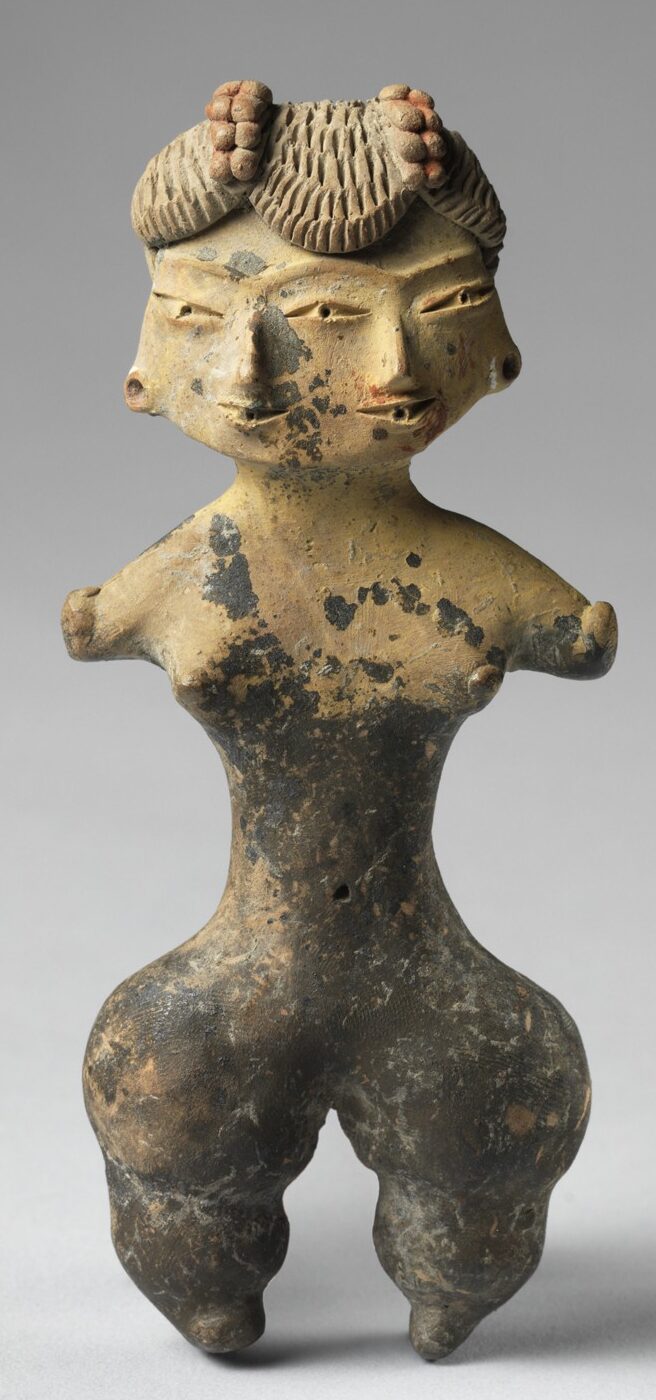AP Art History - Global Prehistory U. 1
1/6
There's no tags or description
Looks like no tags are added yet.
Name | Mastery | Learn | Test | Matching | Spaced |
|---|
No study sessions yet.
7 Terms

Lapita (Terra cotta fragment)
Lapita
Solomon Islands.
c. 1,000 B.C.E.Made from terra cotta.
Subject Matter: A terra-cotta fragment refers to a broken piece of pottery made from clay that has been fired at low temperatures. These fragments can provide valuable insights into ancient cultures through their decoration, shape, and context.
Purpose: Used to cook and/or store food stuffs
Form: Use of curved stamped patterns: dots, circles, hatching -Outlined forms -> comb-like tool to stamp clay

Camelid Sacrum
Camelid Sacrum
Tequixquiac, Mexico.
c. 14,000–7000 B.C.E.Bone
Made from a pelvis.
Subject Matter: Shows proof of animals in their environment, in this case, the Camelide family before they went extinct.
Purpose: The camelid sacrum was likely used in rituals in which animal spirits would be revived, which speaks to the spiritualism of early humans
Form: Hard and most likely very dense.
Holes that were cut into the end of the bone represent
nostrils
• The careful attention to detail and perfect symmetry demonstrates the artist’s hand and the importance of the work
• Done using the subtractive technique of removing
material to create a sculpture
Representation of an animal in the Camelide family.

The Running Horned Woman
The Running Horned Woamn
Tassili n'Ajjer, Algeria.
c. 6,000-4,000 BCE.Pigment
Subject Matter: The Running Horned Woman is believed to have been used in religious rituals and ceremonies, possibly as an embodiment of a goddess or other supernatural being. The horns on the headdress may also symbolize power and authority.
Purpose: The running horned woman represents the embodiment of spirituality
Form: The horns are in composite view
• There is a strong contrast between
light and dark areas
• It was created using natural
pigments on rock
• No ground line
• Ambiguous depiction of space'
Some scholars have interpreted the woman as a horned deity instead of a human wearing ceremonial headgear. The meaning of most African rock art remains uncertain


Tlatilco

The Ambum Stone

Apollo 11 Stones
Apollo 11 Stones
Nambia, Africa.
c. 25000-25300 B.C.E.Charcoal on stone.
Made with charcoal and quartz.
The oldest known of any kind from the African continent.
Subject Matter: Shows documentation of extinct species like Dinasour, shown on the stone. Shows evidence that homosapiens existed.
Purpose: The purpose of these stones was so that the Nomadic people had control over animals. (Shamanistic)
Form: Black drawing to indicate it was drawn by charcoal. It is old and rocky, meaning it was covered by debris for a long time.